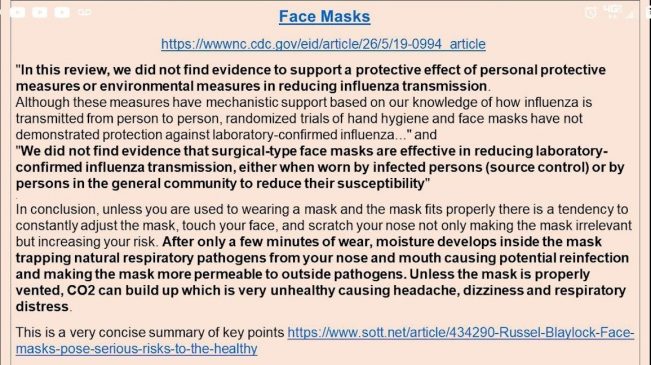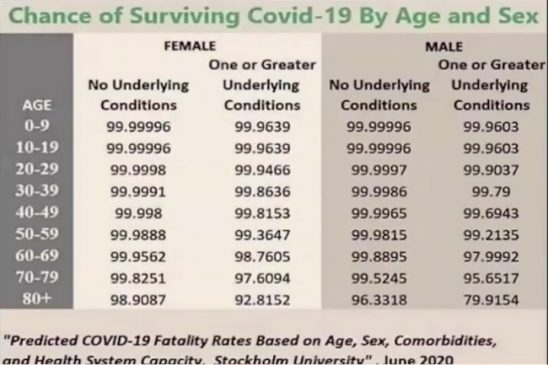Masks — The Most Controversial COVID-19 Debate? by Dr. Joseph Mercola for Mercola
The question of whether we should wear face masks or not to prevent the spread of COVID-19 is a hotly contested issue. Part of the confusion may be related to the difference between viral particles spread via respiratory droplets, and viral particles spread via the air itself.
I believe it’s important to realize the difference between these two modes of transmission, and to not overestimate the protection you can get or give others by wearing a mask.
The science1,2 clearly shows face coverings of various kinds do little if anything to prevent respiratory illnesses caused by aerosolized viruses. Many health authorities still insist that something is better than nothing, though, since they do inhibit the dissemination of viral-laden respiratory droplets.
But influenza viruses — coronaviruses that cause the common cold and SARS-CoV-2 — all spread via the air, not just via droplets or touching contaminated surfaces, and it’s important to realize that preventing droplet contamination does not mean you also prevent the transmission of the aerosolized virus. (The aerosol part of transmission is regrettably overlooked in the video above, which reviews a number of problems with mandatory mask recommendations.)
Size Matters
SARS-CoV-2 is an aerosolized virus, meaning it floats in the air. One of the issues at hand is the size of the virus. If the gaps in the mask are larger than the virus, it stands to reason it cannot block the virus from entering or escaping the mask.
SARS-CoV-2 is a beta-coronavirus with a diameter between 60 nanometers (nm) and 140 nm, or 0.06 to 0.14 microns (micrometers).3 This is about half the size of most viruses, which tend to measure between 0.02 microns to 0.3 microns.4
Virus-laden saliva or respiratory droplets expelled when talking or coughing, however, measure between 5 and 10 microns.5 N95 masks can filter particles as small as 0.3 microns,6 so they may prevent a majority of respiratory droplets from escaping, but not aerosolized viruses.
Lab testing7 has shown 3M surgical masks can block up to 75% of particles measuring between 0.02 microns and 1 micron, while cloth masks block between 30% and 60% of respiratory particles of this size. For cloth masks, cotton-chiffon, cotton-silk hybrids, and high thread count cotton materials provide the best droplet filtration. As reported by the Emergency Medicine News journal:8
“Mueller, et al.,9 placed a particle counter inside various masks worn by a volunteer to sense 0.04 micron NaCl particles aerosolized in ambient air, and found that adding a nylon stocking overlayer to the mask improved virus blockade for all types, including surgical masks. This simple addition improved many of the homemade cloth masks to the baseline level of a surgical mask.”
So, in summary, if you are a carrier of the virus, by wearing a surgical mask, you theoretically lower the amount of viral-laden respiratory droplets that you deposit into your environment by about 75%.
As such, you could argue that surgical masks lower the overall contamination risk to others if you are a carrier of the virus. If you are infected and wear a surgical mask, others in close proximity will be protected to some degree from getting hit by your contaminated respiratory droplets.
That said, the force by which you expel the droplets also matters. Back in April 2020, a small South Korean study10 found that surgical and cloth masks were unable to block SARS-CoV-2 from the coughs of COVID-19 patients. The journal retracted the paper several weeks later.11,12
Continue Reading / Mercola >>>






